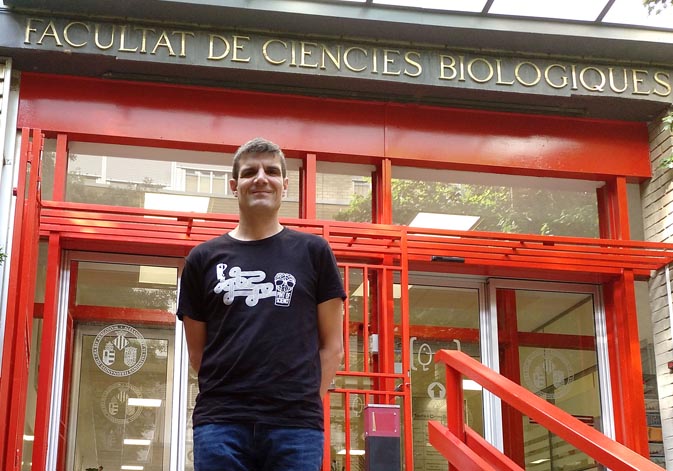Researcher Juan Nácher leads a study that shows a new form of adaptive capacity of neurons in adults
- Scientific Culture and Innovation Unit
- June 1st, 2018

The work, realised in collaboration with researchers of Salzburg and Munich, shows a new form of neuronal plasticity, the capacity of the ability of nervous system cells to adapt anatomically and functionally to a changing environment. The research, published in the journey Cerebral Cortex, confirms the presence of a reservoir of neurons that are incorporated into the circuits in adult life and not during the development phase, as usual.
“At first we thought that neurons were of recent generation, but we found that, although they were generated during embryonic life as the rest of the neurons around them, they were kept in an immature state for much of the animals’ lives”, highlighted Juan Nácher. He is professor of Cellular Biology of the Universitat de València and member of the Research Group in Psychiatry and Neurodegenerative Diseases of INCLIVA and Biomedical Research Centre on Mental Health Network (CIBERSAM).
The research suggests that although it is not known exactly in which neural circuits can be integrated or which are the factors that promote its maturation, these neurons could be involved in some forms of learning or memory.
According to the published work, developed in mice, when a person reaches adulthood, these immature neurons are not functional. However, they disappear when animals age. “We suspected that they were maturing and becoming integrated into the neural circuits, but not knowing what kind of neurons they became over time. Thanks to the research, it has been shown that they become into excitatory neurons typical of the brain region in which they are found.”
Many aspects of these neurons that are incorporated into the circuits in adult life and their maturation and integration process are still unknown. However, they are very interesting because, although in rodents are restricted to a concreted area (olfactory cortex), in primates, including humans, are widespread throughout the entire cerebral cortex and in very high numbers. Moreover, other previous studies of the research group have exposed that these immature neurons are affected in in animal models of depression. According to the researcher, if this thesis is confirmed in humans, it could help to learn more about these pathologies.
Research phases
The study has been realised with genetically modified mice, generated in the Paracelsus University of Salzburg. The team of the Universitat, in which participate Juan Nácher and the PhD fellow Maria Bellés, was in charge of analysing the immature neurons of the rodents to see how they change their morphology, how they receive synaptic contacts and how they integrate in neural circuits.
After this study, the next step is to study these neurons in humans. Currently, the team is already searching data on distribution of these neurons with the aim to check their presence and see if they appear in certain pathologies. Although the study is in the first phase and to talk about its applications is hasty, “we could try to establish methods to control the maturation of these neurons at a given time, for example, in the event of brain damage. We also know that some antidepressants and other psychotropic drugs affected to the maturation process of these cells. That allows us to open new lines of research in this field”, ends the research Juan Nácher.
Article:
Peter Rotheneichner, Maria Belles, Bruno Benedetti, Richard König, Dominik Dannehl, Christina Kreutzer, Pia Zaunmair, Maren Engelhardt, Ludwig Aigner, Juan Nacher, Sebastien Couillard-Despres; «Cellular Plasticity in the Adult Murine Piriform Cortex: Continuous Maturation of Dormant Precursors into Excitatory Neurons», Cerebral Cortex, bhy087, https://doi.org/10.1093/cercor/bhy087



















